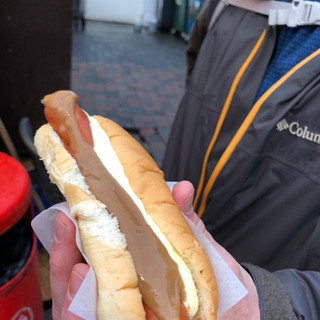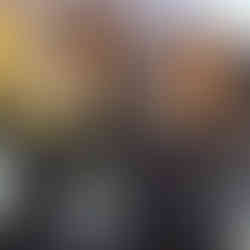
Reykjavik is Iceland’s largest city and the northernmost capital in the world. With unique shops and restaurants, vibrant street art, and a thriving arts scene, Reykjavik can easily fill a day of site seeing when in Iceland. For our week in Iceland, we spent two days in the city, one with the whole family and one with just the adults - as the kids needed a vacation from the vacation for a day. (See here for Iceland planning tips and itinerary for our trip)

With a population of around 123,000, Reykjavik is very small compared to other capital cities. If you are a Minnesotan, it’s about the size of Rochester. The whole country of Iceland has only 357,000 people---and contrast that to the over 2 million visitors in a typical/non-pandemic year!

We parked our vehicle on the west end of town, outside of the city center - no charge for parking - and strolled down toward the harbor to begin our exploration. The harbor is a bustling area with boats ranging from large to small, fishing to tourist boats. The brightly colored buildings and houses that Reykjavik is well known for line the streets. Our theory is that the brightness is to compensate for the dreary winters.
Opening in 2011, the distinctive Harpa Concert Hall is a commanding presence on the harbor. With spacious interior lobbies and places to linger along the colored faceted glazed wall, this building is worth a visit even if you can’t see the concert halls or attend a performance. Harpa was designed by the Danish firm Henning Larsen Architects in co-operation with Danish-Icelandic artist Olafur Eliasson, who drove the design of the dynamic south façade.

The next stop was the Sun Voyager sculpture along the waterfront. This stainless-steel sculpture by Jon Gunnar Arnason invokes the imagery of a Viking longship. With the Mountain Esja in the background, this is an iconic element of Reykjavik and worthy of a photo stop.

The main shopping street is Laugavegur. Most of the shops are smaller, boutique-type shops in the downtown area. With holiday decorations and large windows, it was a pleasant experience to stroll the streets window shopping.
The 5-meter tall vicious-looking Christmas Cat hangs out in Lækjartorg Square This creature, also known as the Yule Cat, is the pet of the Christmas witch Grýla and her lazy husband, Leppalúðl. Iceland doesn’t mess around with their folklore. This Christmas Cat will eat children or adults if they don’t get any new clothing for Christmas. Socks count and are sufficient to save a life. Kids - the next time mom and dad give you a pair of socks or pajamas for Christmas, don't complain. The life you save may be your own.
The Reykjavik City Museum is built around the ruins of a Viking longhouse, which is the museum’s featured exhibit. The hall, one of the oldest structures found in Iceland, was inhabited from 930-1000. Admission is about $13.60 US with children 0-17 being free.
To the south of the downtown area, is Alvar Aalto’s Nordic House, a cultural institution. Unfortunately, it was not open when we tried to visit (one of the problems of holiday travel!). We were able to walk around the outside and peek in---but were a bit disappointed to miss being able to go inside another Aalto building (Aalto’s Finlandia Hall in Helsinki was also closed).
We walked around Lake Tjorin, to the City Hall (or Ráðhúsið in Icelandic). This building also serves as a tourist information center and has a large topographic model of Iceland.
With a 244’ tall spire, the Church of Iceland, Hallgrimskirkja, is an iconic landmark in the city. Designed by Gudjon Samuelsson, the stepped façade is inspired by the basalt rock columns found on the island and took 40 years to complete. Icelandic Viking Leif Eiriksson’s statue holds court in the front of the church. The line to go to the top of the tower wound around the interior of the church, so we decided to forego that experience. The views from the top are remarkable, but best on a clear day, which we didn’t really have.
We loved exploring the city and taking in the colorful buildings and large murals. Reykjavik is known for its colorful murals and urban art.
We also visited the Reykjavik Family Park and Zoo, as it was close to our Airbnb. Featuring Icelandic farm animals, some reindeer, and a few arctic foxes, this zoo was quite small and didn’t take us long to see all the animals. There is an adjoining botanical garden worth a stroll.
Food
Icelandic food leaves much to be desired. I’m sure there are some places with excellent cuisine—but we did not make Iceland's fine cuisine a priority. Some of the strange dishes Iceland is known for: fermented shark, lamb’s head, sour ram’s testicles, skyr (popular Icelandic yogurt), puffin (yes, those really cute birds are also a delicacy), and whale meat. Given that selection, we opted for trying the best hamburgers in the city along with the popular hot dogs.
When you travel with teenage boys, hamburgers are a meal of choice. In Reykjavik’s city center, we opted for Hamborgarabulla Tomasar. This low-key place serves hamburgers and fries in baskets and solved the burger cravings for the kids. Each meal was about $16 each.
An over-rated tourist attraction is a tiny hot dog stand called Bæjarins Beztu Pylsur (The City’s Best Hotdog) is located in central Reykjavik, on the corner of Tryggvagata and Pósthússtræti. If you order one with everything on it, it will come with fried onions, ketchup, sweet brown mustard, regular mustard, and remoulade.
Mostly, we shopped at the local grocers and purchased what we needed to make breakfasts, lunches, dinners, and snacks for ourselves. It was affordable, and we knew our kids would eat what we bought. However, we did indulge in a couple of $12 beers at a place called Icelandic Street Food.
Ceramics
Most tourists seek out Icelandic sweaters when in Iceland, we usually seek out ceramics. I had seen some really beautiful Icelandic pottery in an exhibit at the American Swedish Institute in Minneapolis and had looked into the shop in Reykjavik called Kogga. I was excited to shop there---but after stopping by numerous times, we were unable to find this shop open. We did find another ceramics shop, Kaolin, on Skólavörðustígur "the artists street" and got this lovely little piece (last photo)
Fireworks-- grand finale to the Nordic Holiday
The Icelanders love their fireworks. This can not be overstated. Note that the fireworks aren't lit from a centralized place--but rather from every neighborhood and street in the city. From about 5 pm onward, we spent New Year's Eve looking out across the city from our 11th story apartment with a 270-degree view of the city and harbor, unable to count the number of bonfires (ranging from small backyard do's, to gigantic hillside spectacles), people dancing and singing, lighting boxes, crates, and truckloads of fireworks. Things started out strong and intensified over the next 10+ hours. It was loud, incredibly bright, flashing, and tumultuous! People prone to seizures should avoid this. The next morning, as we went to get pastries, the streets wore the carnage of spent explosives, charred bits of paper, empty boxes, shredded casings, burn marks on the pavement, scorched trash bins, walls and ... it was all remarkable and may very well be the most incredible fireworks display we've seen. These folks all seem to be professional pyrotechnicians! This was a fitting end for our Nordic Holiday trip. Bless (Icelandic good-bye) to this amazing country. We WILL be back.
For videos of Reykjavik and the surrounding area, check out Your Friend in Reykjavik's Facebook page.





























































Commentaires